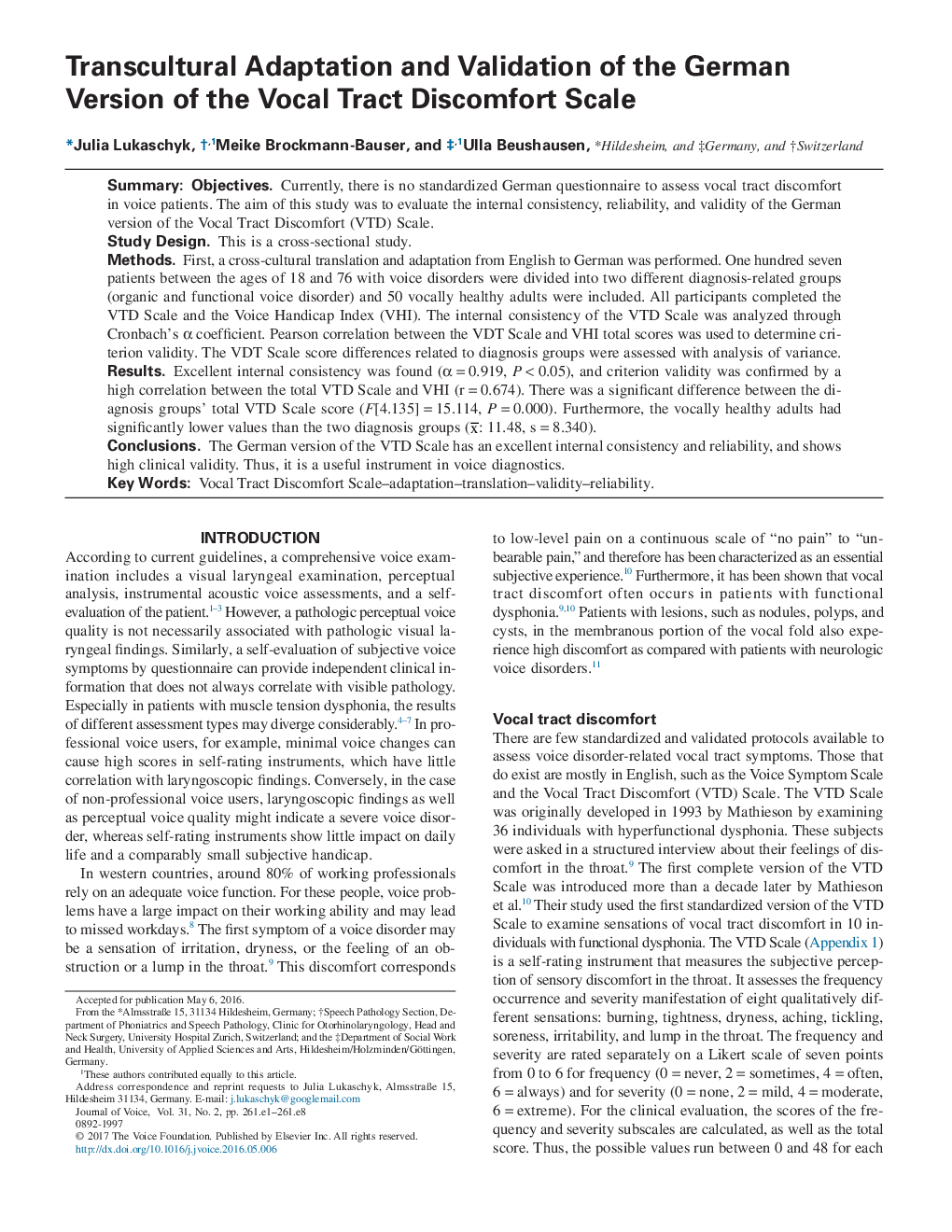| Article ID | Journal | Published Year | Pages | File Type |
|---|---|---|---|---|
| 5124455 | Journal of Voice | 2017 | 8 Pages |
SummaryObjectivesCurrently, there is no standardized German questionnaire to assess vocal tract discomfort in voice patients. The aim of this study was to evaluate the internal consistency, reliability, and validity of the German version of the Vocal Tract Discomfort (VTD) Scale.Study DesignThis is a cross-sectional study.MethodsFirst, a cross-cultural translation and adaptation from English to German was performed. One hundred seven patients between the ages of 18 and 76 with voice disorders were divided into two different diagnosis-related groups (organic and functional voice disorder) and 50 vocally healthy adults were included. All participants completed the VTD Scale and the Voice Handicap Index (VHI). The internal consistency of the VTD Scale was analyzed through Cronbach's α coefficient. Pearson correlation between the VDT Scale and VHI total scores was used to determine criterion validity. The VDT Scale score differences related to diagnosis groups were assessed with analysis of variance.ResultsExcellent internal consistency was found (αâ=â0.919, Pâ<â0.05), and criterion validity was confirmed by a high correlation between the total VTD Scale and VHI (râ=â0.674). There was a significant difference between the diagnosis groups' total VTD Scale score (F[4.135]â=â15.114, Pâ=â0.000). Furthermore, the vocally healthy adults had significantly lower values than the two diagnosis groups (x¯: 11.48, sâ=â8.340).ConclusionsThe German version of the VTD Scale has an excellent internal consistency and reliability, and shows high clinical validity. Thus, it is a useful instrument in voice diagnostics.
